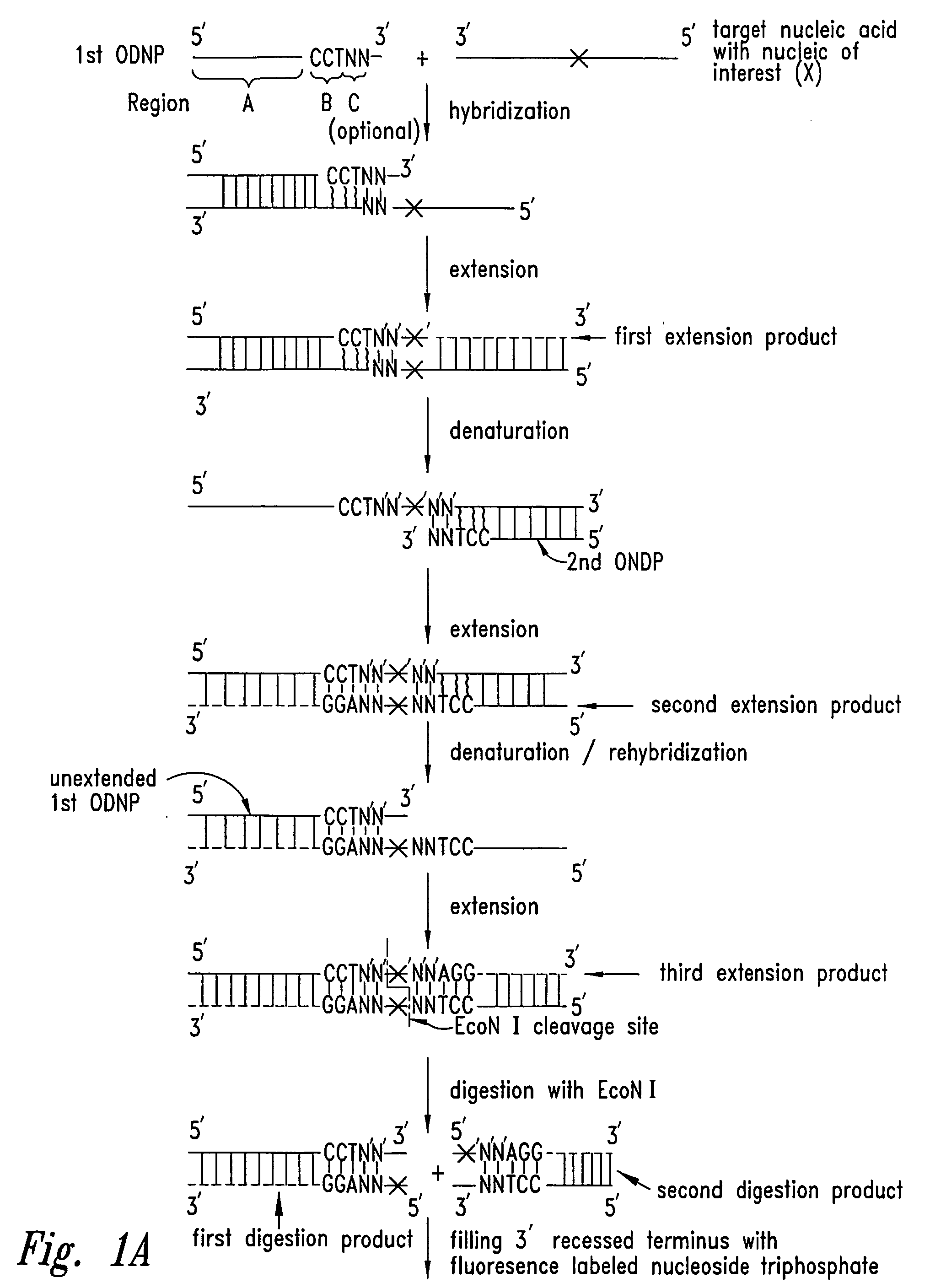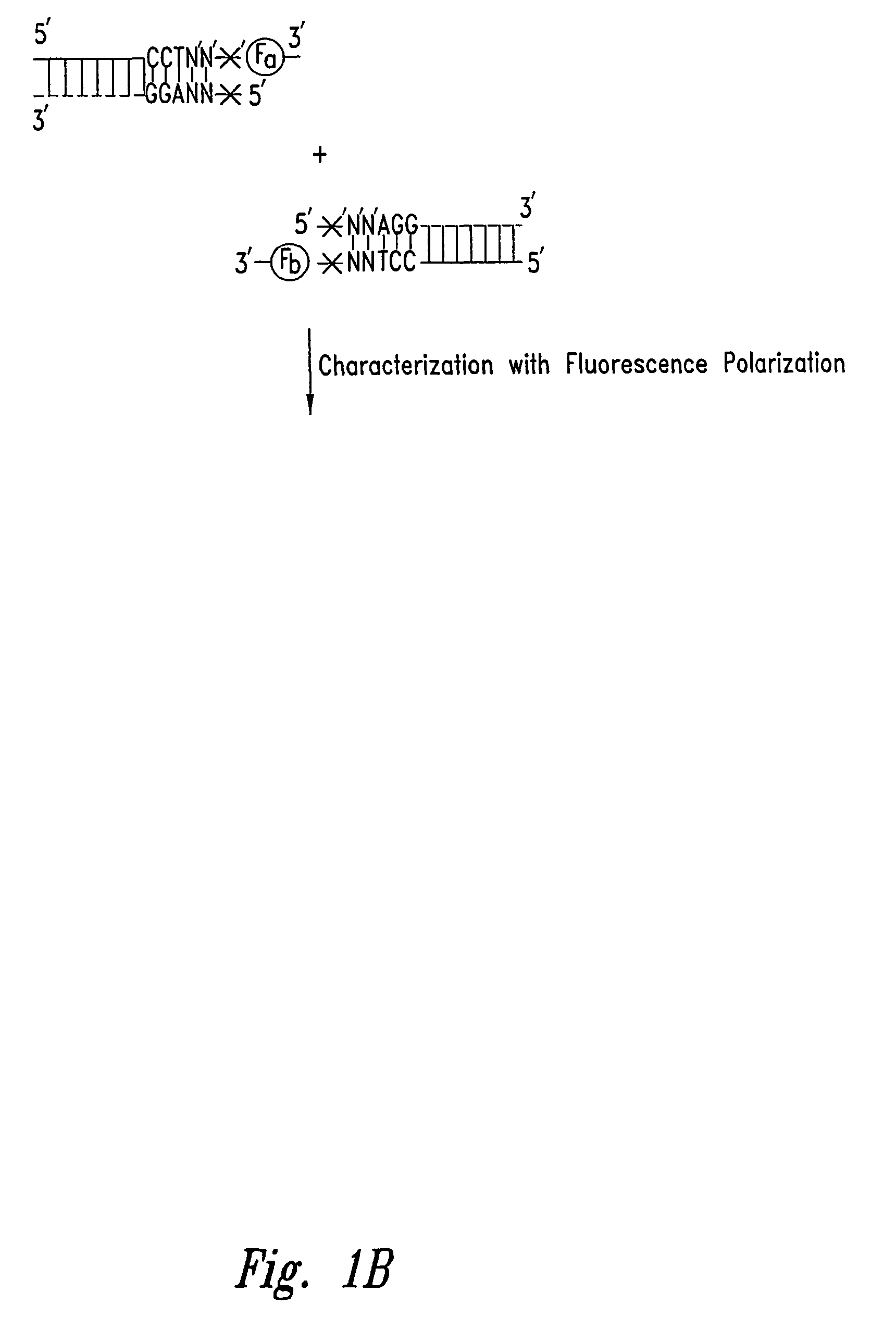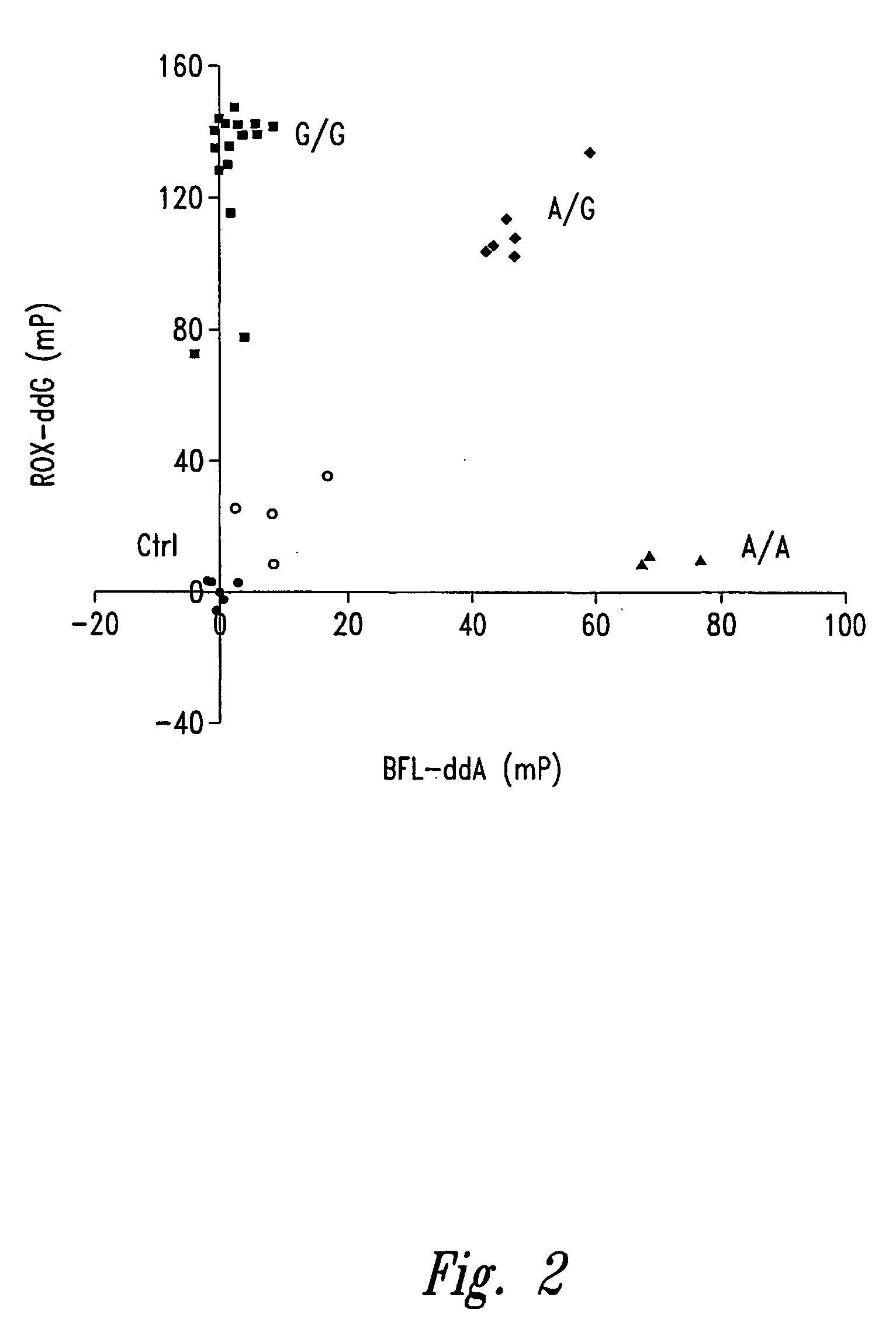Methods for identifying nucleotides at defined positions in target nucleic acids using fluorescence polarization
a nucleotide and fluorescence polarization technology, applied in the field of molecular biology, can solve the problems of generating tumors, unable to meet the needs of wide-scale applications, and the existing methodology for achieving such applications continues to pose technological and economic challenges, and none is sufficiently efficient and cost-effectiv
- Summary
- Abstract
- Description
- Claims
- Application Information
AI Technical Summary
Problems solved by technology
Method used
Image
Examples
Embodiment Construction
Genotype Assignment Using Fluorescence Polarization-ECON I Assay
[0240] This example discloses the use of fluorescence polarization (FP) and the EcoN I template-directed primer extension (fill-in) assay in assigning genotype.
[0241] Enzymes
[0242] EcoN I was obtained from New England BioLabs (Beverly Mass.), AmpliTaq and AmpliTaq-FS DNA polymerase were obtained from Perkin-Elmer Applied Biosystems Division (Foster City, Calif.).
[0243] Oligonucleotides
[0244] Oligonucleotides used are listed in Table 1. Four synthetic 48-mers with identical sequence except for position 23 were prepared (CF508-48), the variant bases are shown as boldface letters. PCR and EcoN I primers and synthetic template oligonucleotides were obtained from Life Technologies (Grand Island, N.Y.).
[0245] Dye-Labeled Dideoxyribonucleoside Triphosphates
[0246] Dideoxyribonucleoside triphosphates labeled with FAM, ROX, TMR, BFL, and BTR were obtained from NEN Life Science Products, Inc. (Boston, Mass.). Unlabeled ddNTPs were...
PUM
| Property | Measurement | Unit |
|---|---|---|
| Volume | aaaaa | aaaaa |
| Nanoscale particle size | aaaaa | aaaaa |
| Nanoscale particle size | aaaaa | aaaaa |
Abstract
Description
Claims
Application Information
 Login to View More
Login to View More - R&D
- Intellectual Property
- Life Sciences
- Materials
- Tech Scout
- Unparalleled Data Quality
- Higher Quality Content
- 60% Fewer Hallucinations
Browse by: Latest US Patents, China's latest patents, Technical Efficacy Thesaurus, Application Domain, Technology Topic, Popular Technical Reports.
© 2025 PatSnap. All rights reserved.Legal|Privacy policy|Modern Slavery Act Transparency Statement|Sitemap|About US| Contact US: help@patsnap.com



